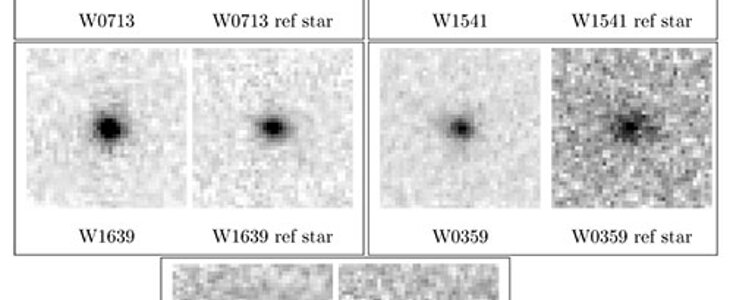Are the Coolest Brown Dwarfs Loners?
18 Febrero 2016
Astronomers use Gemini’s high-resolution multi-conjugate adaptive optics system to look for elusive companions to the lowest mass brown dwarfs.
Y-type brown dwarfs, the coolest type of brown dwarfs known, provide an important link in the study of objects between stars and planets. While the fraction of binary systems associated with warmer and brighter brown dwarfs is well-established, because the Y spectral class is so new (the first Y-type brown dwarfs were only confirmed in 2011) there is little known about what fraction of Y dwarfs have companions. The Y dwarfs are generally lower in mass than the warmer brown dwarfs. For the warmer brown dwarfs, the frequency of binary systems diminishes with brown dwarf mass, and companions tend to be closer to their host and lower in mass themselves. Scientists wonder if this same trend continues for the Y dwarfs.
A research team, led by Daniela Opitz (University of New South Wales), utilized the high spatial resolution and infrared sensitivity of the Gemini Multi-Conjugate Adaptive Optics System (GeMS) to help fill this gap in our understanding. Their work, recently accepted for publication in The Astrophysical Journal and available on astro-ph, uses GeMS on five Y dwarfs discovered by the NASA Wide-field Infrared Survey Explorer (WISE) to look for evidence of companions. The team found no evidence for equal-mass binaries with separations greater than 0.5-1.9 Astronomical Units, which is consistent with what is observed in the warmer and brighter brown dwarfs.
While more studies are needed to fully understand the binary fractions of Y-type brown dwarfs, this work establishes a solid foundation for future work at Gemini and other infrared optimized telescopes.
Paper Abstract
The NASA Wide-field Infrared Survey Explorer (WISE) has discovered almost all the known members of the new class of Y-type brown dwarfs. Most of these Y dwarfs have been identified as isolated objects in the field. It is known that binaries with L- and T-type brown dwarf primaries are less prevalent than either M-dwarf or solar-type primaries, they tend to have smaller separations and are more frequently detected in near-equal mass configurations. The binary statistics for Y-type brown dwarfs, however, are sparse, and so it is unclear if the same trends that hold for L- and T-type brown dwarfs also hold for Y-type ones. In addition, the detection of binary companions to very cool Y dwarfs may well be the best means available for discovering even colder objects. We present results for binary properties of a sample of five WISE Y dwarfs with the Gemini Multi-Conjugate Adaptive Optics System (GeMS). We find no evidence for binary companions in these data, which suggests these systems are not equal-luminosity (or equal-mass) binaries with separations larger than 0.5-1.9 AU. For equal-mass binaries at an age of 5 Gyr, we find that the binary binding energies ruled out by our observations (i.e. 10^11 erg) are consistent with those observed in previous studies of hotter ultra-cool dwarfs.


